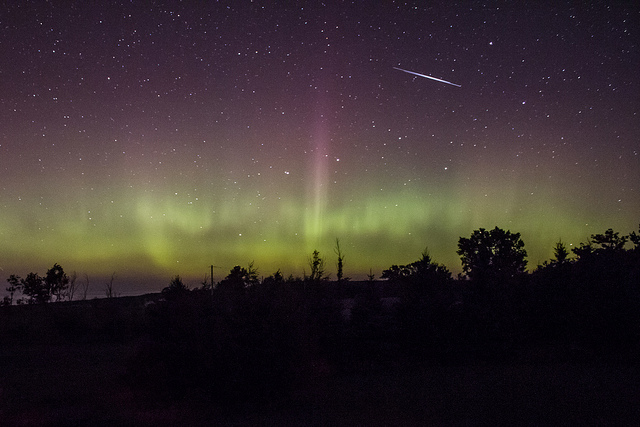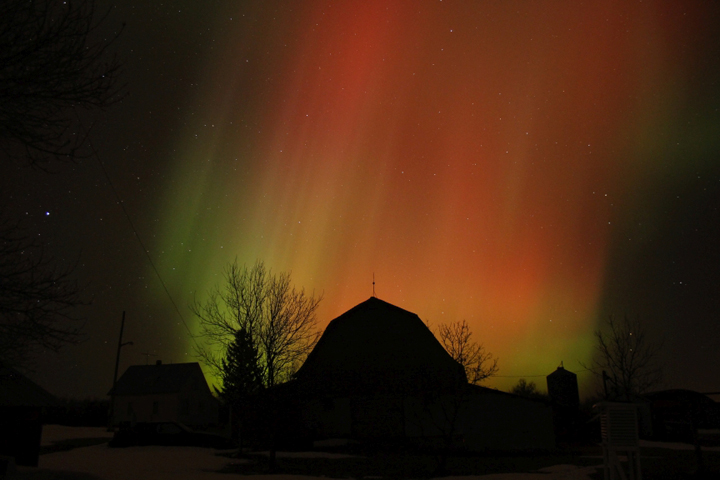People who have been fortunate enough to witness the dancing of the northern lights, or aurora borealis, know that a variety of stunning colours can be seen.

There’s some pretty nifty science behind why we get these various hues.
READ MORE: Why do we get the northern lights?
The source of our northern lights is actually the sun. Sometimes a solar flare and coronal mass ejection erupt from the surface, spewing out particles that get carried along the solar wind.
When those electrically charged particles reach Earth, they interact with our magnetic field, which is weaker at the poles. Basically, they get funnelled in at the north and south poles, triggering the northern lights (it’s the southern lights, or aurora australis in the southern hemisphere). There, they interact with gas particles in our atmosphere, which we see as light.
While green is often the most common colour, reds, purples, blue and violet have also been seen.

Get daily National news
The northern lights occur from about 80 km to as high as 640 km above us.
We see green when those charged particles collide with oxygen molecules, around 100 to 300 km above us.
All-red auroras, which are rare, are produced when the particles interact with high-altitude oxygen (higher than 300 km) or hydrogen. Nitrogen produces blue or purple aurora.
POLAR SPIRITS from Ole C. Salomonsen on Vimeo.
Sometimes these colours are too faint for the eye to pick up (particularly the blues and purples). But if you just set up your camera on a tripod and take a 20-second exposure at a high ISO (800-1600), your camera will pick up what your eyes can’t. And it can be stunning.

If you have clear skies over the next couple of days, try to head to a dark location. There is a chance you might catch a nice display of your own.



Comments